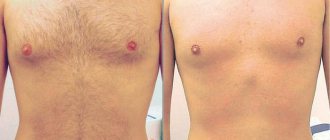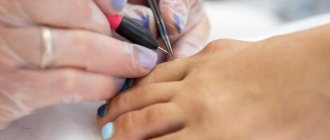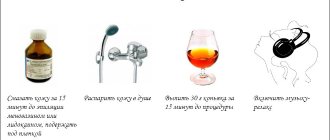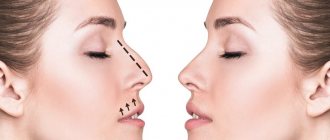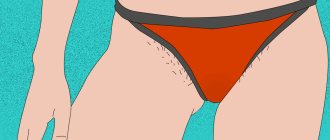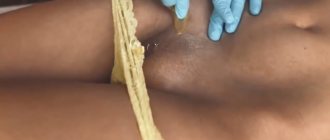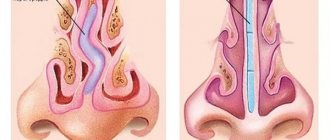The difference between sugaring and waxing
The most popular, modern and more affordable methods of getting rid of hair are waxing (waxing) and sugaring; they are often compared, but there are some differences. What is the difference between sugaring and waxing? Let’s look at their differences below:
- caramel paste is made only from environmentally friendly and simple ingredients (sugar, water and lemon) in contrast to waxing, which contains paraffins and synthetic components with the addition of dyes;
- Another important aspect of how sugaring differs from wax is that sugar does not cause irritation;
- The application of the sugar mixture occurs in the direction of hair growth, and the breakdown is against the growth; when waxing, application and removal does not matter;
- the problem of ingrown hairs is more common after waxing;
- the occurrence of a burn during wax depilation in case of overheating of the liquid mass, the sugar mixture does not require heating, it is enough to knead the paste in your hands;
- The technique for sugar removal differs from wax removal in that it is painless;
- hair breaks off more often during wax depilation because... the paraffin mass hardens quickly and does not have time to capture the hair follicle at the base, leaving a hair stump;
- Sugar depilation time passes faster than with waxing;
- you can make sugar paste at home yourself (the effectiveness of the procedure will not decrease);
- Sugaring costs a little higher than waxing, but basically the difference between the services is relatively small;
- sugar residues are easily washed off with warm water, but residual material after waxing can only be removed with special oil or lotion.
Differences between waxing and sugaring
However, despite the strong similarities, both procedures have significant differences.
The main difference is the method of applying the material to the skin. In waxing, the wax is applied in the direction of hair growth and removed against the direction of hair growth. During sugaring, everything is done the other way around: the paste is applied against the growth of the hairs, and is torn off along the growth, which reduces the pain many times over.
In addition, there are other points in which wax and sugar depilation differ.
Painless
According to consumer reviews, sugaring is a less painful procedure than waxing. There is an explanation for this.
Firstly, since the tug goes in the direction of hair growth, pulling out hairs is easier, therefore, the sensation is not so painful.
Secondly, when sugaring, the caramel comes off from a small area of the skin, but when waxing, the treated area is much larger. Accordingly, the pain that occurs during sugar depilation will not be so sharp.
Waxing is accompanied by painful sensations
Safety
Any procedure should not cause harm to health, so the issue of safety of methods is not the least important.
If we consider the materials used for depilation, then sugaring uses sugar paste, which includes sugar, lemon juice and water. Wax contains many more ingredients, some of which may be synthetic. Therefore, when applying wax to the skin, the likelihood of allergic reactions is higher.
When hot wax is used, there is a risk of burns, which will never happen with sugaring, since the sugar paste has a working temperature of no higher than 38 °C.
Duration of the procedure
Hair removal using caramel takes longer because this method involves treating small areas of skin. With waxing, the procedure is much faster, since a large area of the skin surface is treated in one application of wax.
Efficiency
The melted wax grips the hairs more reliably, so after it is torn off, the skin remains smooth. When sugaring, sometimes you have to treat the same area of the body twice. However, even after this, single hairs may remain; they then have to be removed with tweezers, which further increases the duration of the session.
Economical
Sugar paste and wax are affordable for many. However, one small piece of caramel can treat quite large areas of skin, since sugar paste can be used many times, which cannot be said about wax. In addition, you can make caramel yourself, and this requires ingredients that can be found in every home.
To prepare sugar paste you need to take water, lemon and sugar.
The principle of operation of sugaring
Sugaring (from the English Sugar - sugar) is a gentle method of depilation using a thick sugar consistency from any part of the body; sugar removes hair well along with the hair follicle, ultimately the hair falls out and temporarily stops growing. Sugar paste copes with very hard and short hairs. There are two techniques for applying and removing sugar, let’s look at their differences and compare:
- Bandage technique.
- Manual technique.
The bandage method involves removing hair using bandage strips. The principle is this: an ultra-soft or soft paste is applied to the epilated area with a wooden spatula, then a fabric strip is glued to the applied mass so that a free edge remains and then it is torn off with a sharp movement.
Manual method. Working with paste is done only with your hands without additional tools. To treat one area, one piece of sugar paste the size of a walnut is enough; cosmetologists for this technique choose a medium or thick paste depending on the temperature in the room. Many women choose manual techniques.
After epilation with sugar, new hair begins to grow after 2–4 weeks, depending on the individual characteristics of the body.
Features of sugaring
Sugaring is a method of getting rid of unwanted hair using sugar paste. A warm sweet mass is applied to the surface of the skin in the direction opposite to hair growth. The hairs adhere to the caramel, and the paste is torn off from the skin with a sharp movement along the hair growth. The hairs are removed along with the roots.
When sugaring, sugar paste is applied against hair growth and torn off in the direction of hair growth.
The skin will remain smooth for 2-3 weeks. Then new hair will appear, but its structure will be weakened. Typically the interval between treatments is 4 weeks, although this may be shorter or longer depending on the thickness, thickness and rate of hair growth.
The hair length at which experts recommend sugaring is 3–7 mm.
For different parts of the body, paste of different densities is used: soft, medium and dense.
It should be noted that tearing the paste along the hair growth reduces the pain associated with pulling out hair, so many consumers choose sugaring, especially when it comes to depilation of such sensitive areas of the skin as the upper lip, armpits, and intimate area.
During sugar depilation, various techniques for applying and tearing off caramel can be used:
- manual;
- bandage;
- spatula.
Video: manual sugaring technique
Sugaring is one of those few hair removal methods in which unpleasant consequences occur extremely rarely. However, they still exist, and you need to know about them:
- itching and peeling;
- ingrown hairs;
- purulent inflammation;
- bruises;
- dark spots.
If the sugaring technique is violated, ingrown hairs, pustules, irritations, and bruises may appear.
The reasons that cause these consequences are the same as with wax depilation.
Restrictions on use
There are some contraindications for which sugar depilation cannot be used:
- diabetes;
- dermatitis, psoriasis, eczema and other skin diseases;
- rosacea;
- phlebeurysm;
- damage to the skin;
- warts, papillomas, etc.;
- allergic reaction to some ingredients of sugar paste.
If neoplasms have accumulated on the treated area of skin, then depilation in this area cannot be done, since they can be accidentally torn off
You need to know that pregnancy and breastfeeding are relative contraindications to the use of sugaring.
In the first two trimesters, a pregnant woman’s pain threshold is low, so virtually painless sugar depilation can cause severe pain. This is fraught with the development of uterine muscle tone and termination of pregnancy. In the last trimester, a woman’s hormonal background changes, the pain threshold increases, so sugaring can be used during this period.
If a nursing mother has a low pain threshold, then sugar depilation can manifest itself as a stress factor, against which there is a risk of disappearance of breast milk.
Pros and cons of sugar hair removal
Shugaring, like any type of hair removal, has its comparative advantages and disadvantages. Its popularity over other types of hair removal lies in the fact that:
Advantages of sugar depilation:
- Natural product.
- Affordable price.
- Pain sensations are minimized.
- Can be done at home.
- Long lasting effect.
- Hypoallergenic.
- No ingrown hairs
- When pulled out, the hairs do not break off, but are removed from the roots.
- Shugaring - spa skin care, including light peeling, delicately removes dead skin cells of the epidermis.
Disadvantages of hair removal using sugar:
- Without certain skills, it will be difficult for a beginner to manipulate sugar.
- If the paste is torn off, hematomas may occur.
- Duration of the procedure.
- You need to grow your hair.
- There are contraindications for this procedure.
Contraindications for waxing/sugaring
Every person who wants to get rid of excess hair using sugar or wax should be aware that not everyone is allowed to carry out such a procedure as hair removal.
People with diabetes and HIV-infected people should not remove body hair, as an infection can easily be introduced under the skin, which will cause a purulent-inflammatory process. Even after superficial trauma by wax or sugar, the skin of people with these diseases recovers slowly. Epilation is not recommended for pregnant women.
Since sugaring and waxing are accompanied by unpleasant sensations, they should not be done by people with a low pain threshold. For the same reason, women who suffer from coronary heart disease and hypertension or are in the second half of the menstrual cycle, when the pain is felt more strongly, should avoid waxing hair and using sugar paste.
The principle of waxing
Waxing (waxing) is an effective cosmetic procedure for removing unnecessary hair along with the hair follicle using a molten mixture, which before application is heated in a wax melter or using hands, depending on the type. There are different types of wax:
- Warm is most often produced in cartridges with a ball dispenser, which easily distributes the wax mass over the skin. They tear it off with bandage strips. Before use, warm up to body temperature in a microwave oven. This wax is used to treat the area of the arms, legs and armpits, where the hair is softer. It does not effectively deal with hairs in intimate areas.
- Hot is more effective because high temperature conditions open the pores and hair is easier to remove. The hot composition is preheated in a wax melter to a high temperature, after which the melted composition is applied to the treated area using a spatula, and removed with a bandage strip. Hot wax is ideal for the bikini area.
- Film is well used at home, does not require specific skills and can be used by anyone. Produced in the form of granules that are easily melted in a wax melter. The melted mass becomes like an elastic film, the film composition is applied to a small area, after 10 seconds the composition hardens and is torn off with a sharp movement of the hands. Film is convenient to use on uneven surfaces in the armpit, under the knee and in the intimate area.
- Cold is available in the form of ready-made strips on which wax is applied. Before gluing, rub the composition in your hands to warm it up a little. This method is suitable for soft hairs in the facial area.
The temperature at which the wax is heated depends on the area being epilated - the legs are treated with cold or warm wax, and the intimate area is treated with hot wax.
The heated wax is applied in an even layer to the area to be epilated and after a few seconds, when the mass hardens, it is removed along with the unwanted vegetation. You can remove the composition in several ways: using your hands or bandages. Attention! If the wax mass overheats, you can get a skin burn. Observe the heating temperature.
Features of waxing
The wax used for hair removal contains many elements: paraffin, pine resin, white beeswax, various polymers. The mixture is heated to the desired temperature and applied to the area that needs to be cleared of unwanted vegetation. After the wax hardens, it is removed against the growth line with a sharp movement. If you do the procedure regularly, then over time the hair becomes thinner due to the fact that the follicles weaken.
There are 4 types of wax:
- Film;
- Warm;
- Cold (wax strips);
- Hot wax (tablets, granules).
The lower the temperature, the more painful the session is, so it is better to choose a hot or film type.
Film-type wax is considered one of the most comfortable methods of depilation. Its temperature during the procedure should not exceed +39 °C. If you follow this rule, getting rid of hairs will be the least painful. In addition, the film type follows all the curves of the body, so hair removal in the bikini area is more comfortable.
Pros:
- long lasting result;
- the ability to do the procedure yourself at home;
- difficult to injure the skin (only when the composition overheats);
- hairs are removed from the roots.
Minuses:
- high probability of ingrown hairs;
- more pronounced pain of the procedure;
- contains synthetic components and dyes;
- to remove wax residues from the skin, various oils are used, which do not always eliminate stickiness;
- irritation due to allergies to the composition of the mass;
- risk of burns if it overheats.
The approximate cost of the procedure is shown below:
Advantages and disadvantages of wax
Regardless of the type of wax (hot, warm or cold), there are a number of advantages and disadvantages that distinguish wax hair removal from other manipulations:
- Long-term results.
- Affordable price.
- Captures the maximum number of hairs in one application.
- Fast completion of the procedure.
- Easy to use at home.
Disadvantages of waxing:
- It is not possible to remove short hairs; the minimum length is 5 mm.
- Maximum length 7 mm. if the length is not respected, hair removal will be much more painful;
- Painful sensations.
- Irritation may occur on the area being epilated, which will lead to discomfort and unpleasant pain;
- The occurrence of ingrown hairs.
- There is a risk of burns if the wax overheats.
Waxing & sugaring. Truth and myths ✅❌
We discussed the advantages and disadvantages of depilation in the article “Biodepilation pros and cons.”
Let's compare wax and sugar depilation?
After reading a lot of information on the Internet, visiting the websites of manufacturers and sellers of sugar paste and wax, we realized that in the depilation industry certain stereotypes have developed in favor of one type or another. These are opinions based on emotion rather than knowledge.
Let's try to move away from stereotypes, dispel myths and dot all the i's.
Waxing can burn your skin, but sugar won't - MYTH
During sugar depilation using manual technique, the paste in working condition has a temperature of +37+38 degrees. When working using the bandage method, the sugar paste is heated to a temperature of +40+42 degrees. All modern waxes also have a low temperature. The operating temperature of warm waxes is +38+39 degrees; depilation with hot film waxes is done at a temperature of +38+42 degrees - an absolutely safe and comfortable temperature even for the most delicate areas. Depilation with film waxes in delicate areas is one of the most popular cosmetic procedures. The emergence and incredible popularity of low-temperature film waxes have forced classic hot waxes out of the market. Classic hot waxes with a melting point of +50 degrees and above are not in demand today due to the high operating temperature and inconvenience of use.
Wax sticks to the skin, but sugar paste does not - MYTH
Checking the adhesiveness of the product (adhesion to hair and skin) is very simple. If wax is applied to the surface of the skin where there is no hair, it can be easily removed without pain or discomfort. The wax does not stick to the skin, does not form “sticks”, and only adheres to the hair. Sugar paste forms “stickiness” on skin with or without hair, because... sticks to the skin.
Wax and sugar paste remove very short hairs - TRUE
Waxes and sugar paste have good stickiness and viscosity, which allows them to adhere to short hairs. Warm waxes and sugar paste remove hairs 3-5 mm long. Film waxes are capable of removing hairs as long as 1 mm. Unlike warm waxes and sugar paste, film waxes harden on the skin, which makes it possible to gently fix short hairs in the application and remove them along with the roots. Thanks to its tenacity, wax copes well with short, coarse, shaved hair. Whereas applications of warm waxes and sugar paste do not harden on the skin, so they lack fixation, and when the application is removed, short hairs slip out of it.
During sugaring, sugar paste does not break off hairs, but during waxing, hairs break off - MYTH
Modern warm waxes, film waxes and sugar paste are elastic. They are easily applied to the skin, completely envelop the hairs, and when removed, remove hairs with roots. Film wax retains its elasticity even after hardening. The frozen application of film wax is easily stretched, like chewing gum, without damaging even the removed hairs. This does not apply to classic hot waxes.
Sugar paste is an innovative product - MYTH
The recipe for making sugar paste has been known for centuries and is relevant today - sugar, water and citric acid. Some manufacturers have eliminated citric acid, replacing it with a component that is safe for sensitive skin. This is the only significant change that has occurred with sugar paste over the past 10 years. Of course, sugar paste appeared with various plant and mineral components, dyes and flavors. These additives are included in the traditional sugar paste recipe to expand the range and do not in any way affect the quality of the product. The simple composition and cheap production made it possible to mass produce sugar paste. More than 50 domestically produced brands are represented in Russia. The market has formed only because sellers can sell a low-cost product at a high price (with a large markup) and make it popular.
Wax production is a complex production process. Each of the few well-known manufacturers has its own wax formula. Special raw materials and expensive equipment are required for the production and packaging of wax. In recent years, there have been qualitative changes in the composition of wax, improved formulas with new properties have appeared: The formula of warm classic waxes has been significantly improved. They have become softer, do not stick to the skin at all, and at the same time adhere perfectly to the hair. Synthetic waxes for sensitive skin and combined waxes that do not leave stickiness have appeared. These waxes have increased adhesion. Classic bitter waxes were replaced by low-temperature film (polymer) waxes, which radically changed the approach to depilation in delicate areas. The form of wax production has diversified; in addition to waxes in jars, they began to produce waxes in the form of disks, flowers, in the form of granules and shavings.
Sugar paste does not damage the skin, unlike wax - MYTH
You can apply sugar paste to the same area no more than 3 times, just like wax. The fact is that sugar and wax, in addition to hair, are good at removing dry particles from the surface of the skin, resulting in depilation with a light peeling effect. If you walk over the area where depilation is done more than 3 times, the skin will still be peeled, which can lead to damage. Redness, swelling, burning sensations and pain may appear in this area - these are symptoms of injured, rubbed skin (many people confuse it with a burn). The cause of skin damage is not sugar paste or wax, but the illiterate actions of the depilation specialist.
Waxes are more comfortable to work with than sugar paste - TRUE
Wax is not affected by skin temperature or ambient temperature. Wax works under any conditions. When choosing sugar paste, you should always take into account the temperature of the master’s hands, the temperature of the areas where depilation will take place, and the air temperature in the office. At elevated temperatures and humidity, the sugar paste begins to spread, becomes unruly and “sticks.”
Using sugar paste to remove hair in delicate areas is less painful and more convenient - MYTH
Pain during depilation has nothing to do with the use of sugar paste or wax, but depends on the structure of the hair and the pain threshold. In delicate areas (face, armpits and bikini) the hair has a different structure from body hair. These hairs have a large bulb, surrounded by a large number of nerve endings and blood vessels. Hair grows deep from the skin and has a dense shaft. Moreover, hairs in delicate areas grow in 8 directions. Naturally, removing such hair is both painful and difficult.
When sugaring, the paste is taken with a dense consistency and applied to the skin with small stitches, always strictly against hair growth, and removed as the hair grows (look at the direction of hair growth). There can be from 7 to 10 such stitches in the armpit area and the same number of tears. Each tearing and removal of hair is accompanied by a painful reaction. It should be remembered that when removing a stitch, it is not recommended to press in the armpit; intense and repeated pressure in this area is harmful to the lymph nodes.
When waxing, film wax is always used to remove hair in delicate areas. Film wax is applied in one application to the entire armpit without taking into account the direction of hair growth. Film wax is very flexible, it easily envelops hairs, follows the contours of the body, captures the shortest hairs and then begins to harden, fixing everything it has captured in the application. While the wax hardens (up to 12 seconds), under the wax application the skin steams and the hair channels open. When removing the application, the wax does not pull hairs out of the skin, but gently pulls them out, minimal pain is guaranteed. Even in a frozen state, film wax retains its plasticity, this allows you to remove hair growing in different directions without breaking off. A maximum of 3 applications are applied to the same area.
For varicose veins it is better to work with sugar than with wax - MYTH
Varicose veins and capillary networks on the skin are not a contraindication for depilation. But you need to work with such skin very carefully, choosing gentle products and methods of hair removal. When waxing, warm waxes are used, the melting point of which is +38+39 degrees; for problem skin this is the normal temperature range. It is best to apply small wax applications and remove them in small strips. Be sure to hold the skin and remove the strip parallel to the skin. Sugaring lovers are also recommended to use the bandage method. The manual method is detrimental to veins and capillaries. To perform depilation, up to 30 stitches of sugar paste and the same number of tears are applied to the lower legs. To remove the sugar stitch, pressure is necessary, but frequent pressure on the skin leads to compression of the blood vessels and poor circulation.
The bandage technique for sugaring differs from waxing using depilatory strips - MYTH
Bandages are special strips of material or paper for removing sticky products (wax or sugar paste) from the surface of the skin. The bandage technique is the use of bandages when removing wax or sugar paste. The wax, heated to working condition, is applied to the surface of the skin in the direction of hair growth. Then a depilatory strip (bandage) is applied and pressed tightly so that the wax adheres well to the strip. The strip is removed against the growth direction, removing wax and hair from the surface of the skin. When sugaring, it’s the same thing, only the heated sugar paste is applied in the direction opposite to hair growth, and removed as the hair grows. In general, the bandage technique for sugaring was adopted from wax depilation especially for those masters who have not mastered the manual technique of work. Sugaring is famous for the fact that masters skillfully manipulate sugar paste, applying and removing it from the skin with their fingers, this is the beauty of the work and the attractiveness of the procedure. Unfortunately, not every hair removal specialist manages to “work well” with a very capricious product called “sugar paste,” so bandages have come to the rescue.
Learning to work with sugar paste is more difficult than waxing, and training costs more - TRUE
Learning to work with waxes is not difficult. You need to sign up for a good training seminar, watch a master class from an experienced master technologist, work with all types of waxes in all zones under his guidance, and you can start practicing. To begin with, let your loved ones be your models, the ones you get good at. Further, with each client you will gain experience and improve your skills. When learning sugaring, the technologist who will “position” the hand is of great importance. To master the art of sugaring, you need to get a very good feel for the sugar paste, select the necessary consistency for yourself and undergo repeated practical training under the guidance of an experienced sugaring technologist, and only after that begin to work independently. According to statistics: out of 10 people trained in wax depilation, 9 people work successfully. Out of 10 people who have learned sugaring, only 3 become good practicing masters. In Russia, the price of training for a wax depilation master ranges from 3 to 5 thousand rubles, for a master sugaring artist - from 5 to 15 thousand rubles.
| Characteristics | Wax | Sugar paste | |
| Warm wax | Film wax | ||
| Working temperature | +37+39 | +38+42 | +37+40 |
| Required hair length | 3-5 mm | 1 mm | 3-5 mm |
| Taking into account the direction of hair growth during application/removal | Along hair growth / against hair growth | In any direction / in any direction | Against hair growth/along hair growth |
| Number of shin avulsions | 8-10 times | with the bandage technique 8-10 times, with the manual technique – 28-30 times | |
| Consumption on shins | 25 grams | with bandage technique - 25 grams, with manual technique - 60 grams | |
| Calf speed | 5-7 minutes | with bandage technique – 5-7 minutes, with manual technique – 10-15 minutes | |
| Number of tears in the armpit | Does not work | 1-3 times | with manual technique - 7-10 times |
| Flow in the armpit | 10 grams | 10 grams | |
| Speed of work in the armpit | 3 minutes | 7 -10 minutes | |
| Acquiring Mastery Skill | 5 models | 20 models | |
| Cost of education | 3-5 thousand rubles | 5-15 thousand rubles | |
Approach the choice of material for work consciously and achieve success together with MyProfi and ItalWax!
Comparison: which hurts more: waxing or sugaring
Pain from waxing or sugaring depends on the sensitivity threshold. But based on numerous reviews, we can conclude that sugaring is a less painful and better-quality procedure than waxing.
When waxing, the skin can be easily injured because... wax removes hairs along with particles of the skin, and if you epilate one area several times, pain occurs with further irritation, and when sugaring, caramel paste clings only to the hair, without exposing the skin to injury.
Another important point why wax hair removal is more painful is that the wax mass is applied to a large area of skin, and the sugar paste is applied to a small area. Therefore, many people opt for sugaring, especially when they plan to epilate a sensitive area.
Comparison by main criteria
Several basic criteria can be identified that will allow for a comparative analysis to understand how sugaring differs from waxing.
Soreness
Unpleasant sensations are present both during waxing and sugaring, since the hairs are removed from the roots. But sugaring is considered less painful, since the paste is not pulled off against hair growth, but along the way. This simplifies the hair removal process and minimizes discomfort - some specialists perform the procedure so skillfully that clients do not feel anything. Another reason for the relative painlessness of sugaring is the treatment of the area in small areas. In waxing, the hair is torn off in a whole layer at once, which causes pain. Plus in the “karma” of sugar hair removal.
Quality of funds
Pastes used in sugaring are positioned as absolutely safe and hypoallergenic. In theory, besides water, sugar and citric acid, they should not contain anything else, not even preservatives - their function is performed by glucose in the composition. Accordingly, high-quality products do not cause allergic reactions or individual intolerance. Wax is characterized by a more “chemical” composition - it contains plasticizers, rosin, ethylene, glyceryl and sulfur. Although many manufacturers add caring components to the mixture - essential oils and plant extracts. Again, the benefits of sugaring due to naturalness.
Safety of use
This refers to the process of applying hair removal products to the skin. Sugar paste is used warm, heated to a temperature not exceeding 40 °C. Lubricating the skin does not cause discomfort and at this temperature cannot cause a burn. The most popular hot wax is heated to 50–65 °C, so the risk of getting burned is higher. To be fair, it is worth saying that both paste and wax can be overheated and cause burns. Home-cooked pasta is especially dangerous - many people simply don’t wait for it to cool down and use the paste too hot. Both products will be safe only if the heating temperature is maintained.
Session duration
Sugaring removes hair in small sections. Craftsmen most often use a manual technique, in which the paste is picked manually. When treating large areas, the session can last up to one and a half hours. When waxing, a large area is treated at once, which allows you to speed up the procedure. A session with an experienced master takes about 15-20 minutes. Speed benefits of waxing.
Efficiency
Hot wax grabs hairs more reliably than sugar paste, so the quality of hair removal during waxing is higher. The only exception is cold film wax, which both masters and their clients often complain about. The stickiness of the sugar paste is not always enough to remove all vegetation in one go. The paste must be applied to one area several times to keep the skin clean. Plus sign in wax karma.
Effect duration
Both hair removal methods involve removing hair along with the follicles. It takes 3 to 6 weeks for growth to recover and new hairs to begin to emerge. Much depends on individual indicators of hair growth rate, hair removal area, time of year and hormonal levels. Sugaring and waxing are equivalent.
Session cost
The prices for waxing and sugaring in salons are not much different. Masters use only professional products, which by definition cannot be cheap, so you won’t be able to save money. The cost is set for individual zones, and hair removal for men is more expensive due to the increased thickness and stiffness of the hair. The price will depend on the prestige and location of the salon (it is always more expensive in the capitals). The techniques are equivalent.
Cost of funds
If we talk about store-bought products, then wax and sugar paste are in the same price segment. But sugar is used more economically - with one piece of paste it is possible to treat a fairly large area until the caramel becomes clogged with hairs. Re-applying wax will not work - it needs replacement. You can radically reduce the cost of sugaring at home if you cook the paste yourself. Sugar, water and lemon - nothing else is needed. You can save on sugaring if you make homemade caramel.
Skin cleansing
Caramel and wax are quite sticky in structure. But the sugar paste is water-based, so after the session it can be easily removed from the skin with a regular damp cloth. Cleaning wax from skin is much more difficult due to the presence of fat and oils in the composition. And if the drops get on your clothes, it will be even more trouble. Sugaring has the advantage of being hygienic.
Contraindications
Contraindications to waxing and sugaring are identical:
- early stages of pregnancy;
- severe stages of varicose veins;
- damage, inflammation, moles on the skin;
- neurological disorders (epilepsy, psychosis);
- diabetes;
- bleeding disorders;
- autoimmune pathologies;
- taking potent and hormonal medications;
- allergy to components of cosmetic products.
The procedures are equivalent in terms of health.
Ingrown hairs
The appearance of ingrown hairs is more typical with wax, since they are removed against the growth direction. Hair follicles become twisted and may subsequently grow abnormally, becoming lodged under the skin. During sugar hair removal, the roots are not deformed and the direction of hair growth does not change, which reduces the risk of ingrown hairs. But individual characteristics and protocol violations can provoke the appearance of ingrown hairs even with sugaring. With sugar hair removal, there is less risk of ingrown hairs.
Traumaticity
Injuries include the appearance of bruises, bruises and bloody dew on the skin. Complications are possible both with sugaring and waxing, but only if the hair removal technique is broken: the skin is not properly stretched, paste (wax) is applied and removed. Neither sugaring nor waxing can be called absolutely safe.
Epilation zones
Waxing is fastest and most convenient on large areas - arms, legs, back, stomach. But sugaring is ideal for treating small and sensitive areas - the face, armpits, bikini area and deep bikini. Sugar has a gentle effect on delicate skin and allows for more subtle processing. Sugar is good for small sensitive areas, wax for large ones.
Comparison: which is more effective: wax or sugaring?
What works better for excess hair: sugaring or waxing? Let's look at this question in more detail. The fact is that the wax removes the hairs along with the bulb, but it does not firmly grasp everything and when removed, it leaves the hairs in a broken state; tweezers will help to deal with the stump. Unlike waxing, sugar hair removal gently envelops each hair and pulls it out along with the root follicle. With regular use, the hair becomes thinner and lighter, the skin becomes smooth and velvety. We can conclude that the effect will be better from sugaring than from waxing.
But it’s definitely up to you to decide whether sugaring or waxing is better, although both techniques are harmless to the body.
Hair removal with sugar paste
The paste consists entirely of natural ingredients. But all the same, before the procedure you should find out whether you are allergic to citrus fruits, because the product contains citric acid. The composition may also include various essential oils, honey or sugar.
Unlike wax, sugaring paste varies in degree of hardness:
- Soft;
- Average;
- Tough.
Sugaring copes with any area where it is necessary to remove unwanted hair: deep bikini, legs, arms, armpits, area above the upper lip, etc. This hair removal method is perfect for people with loose or thin skin, because during sugaring the skin does not stretch, as this happens during waxing.
Approximately a week should pass between sessions. During this time, the hairs will reach the permissible length of 3-6 mm, which is necessary for depilation. With a shorter length, you will get ingrown hairs, stumps and will not be able to remove all the hairs.
Pros:
- low likelihood of allergies;
- Easily washed off the skin with warm water;
- acts as a peeling and moisturizes the skin;
- contains only natural ingredients;
- you can do the procedure yourself at home, you can also cook the pasta yourself;
- You can’t get burned;
- The more treatments you do, the softer your hair becomes and its growth slows down.
Cons of sugaring:
- it takes a little longer to get rid of excess hair;
- the method causes less pain than waxing. With each procedure it becomes smaller;
- higher price when performing the procedure in the salon.
Hair removal cost:
Skin care after waxing and sugaring
After the procedures, ingrown hairs, slight irritation or redness of the skin may occur. To avoid negative consequences, cosmetologists recommend following several skin care rules:
- after manipulation, the skin must be treated with a moisturizing and restoring agent, without ethyl sprit;
- in the first days it is not recommended to visit swimming pools, hot tubs or saunas;
- It is prohibited to rub the epilated area with a washcloth and scrub, especially in the bikini area, otherwise dermatitis will occur;
- for 3 days, cover the area from sunlight and apply sunscreen with maximum protection;
- In case of a burn after waxing, treat the skin with healing ointments Panthenol or Bepanten.
- A few days after depilation, you need to do scrubbing, which will help prevent ingrown hairs and improve the condition of the cells.
Waxing
At one time, waxing began to be widely used as an alternative to razor. Yes, this procedure was (and remains) painful (unlike shaving), but it:
- is much more effective and allows you to forget about unwanted hair for a period of two weeks to a month, and the growing hairs are not hard and do not prick;
- gradually reduces the amount of hair and makes it thinner, softer and lighter;
- applied immediately to relatively large areas of the skin surface;
- eliminates the risk of cuts;
- removes dead cells and dead skin particles along with hairs, thereby ensuring natural peeling;
- can be used on absolutely any part of the body.
Agree, for the sake of such benefits, it seems quite reasonable to endure pain. Moreover, it can be minimized.
A few simple ways to reduce pain
To reduce pain during waxing, you should adhere to several rules:
- firstly, do not plan waxing a week before and during your menstrual period (during this period, sensitivity is increased and pain will be maximum);
- secondly, thoroughly clean and exfoliate the skin with peeling the day before the procedure (precisely the day before, otherwise the skin will not have time to recover);
- thirdly, try to breathe so that the wax “cake” comes off as you exhale (yes, it sounds strange, but it really helps);
- fourthly, for epilation of the most sensitive areas of the body, choose hot wax (deep heating of the skin will open the pores and make hair removal easier and less painful).
Wax has such a property (for which it is valued in paraffin therapy) that it does not allow heat to pass through itself.
A compress effect is created. As a result, the pores on the skin open well, which greatly facilitates the separation of hairs from the hair follicle. Anna
https://www.pro-shugaring.ru/page/vosk-ili-shugaring
In addition, before the procedure, you can take a broad-spectrum pain reliever (Analgin, Ibuprofen, Pentalgin), and directly during hair removal it is recommended to apply ice wrapped in a napkin to the surface of the treated area for ten minutes: this will soothe the skin, relieve pain and reduce the risk of irritation .
Video: cosmetologist on how to relieve pain from hair removal
There is an objective factor responsible for the intensity of your pain: your individual pain threshold, that is, the level of irritation of the nervous system from which you feel pain. It is because of this that someone can walk barefoot on hot coals, and someone is ready to pluck their eyebrows only under anesthesia. It is impossible to influence the level of the pain threshold; you can only try to adjust the intensity of sensations with the help of auxiliary means (the same painkillers or anesthetic creams). And this is the first thing you need to remember when choosing the most suitable procedure for removing unwanted hair.
When you don’t have to choose: in what cases is waxing recommended?
Let's say your pain threshold level, combined with various clever (and not so clever) pain-relieving tricks, allows you to use any of the popular hair removal methods. When should you choose waxing?
Waxing is indicated in at least two main cases: when coarse hair is removed (even if we are talking about the most sensitive areas of the body) and when a large area is treated at once (for example, shins).
As for the specifics of removing coarse hair, it is wax that provides the greatest adhesion to it and, accordingly, its most reliable grip. And in the case of hair removal from large surfaces, the use of wax allows the procedure to be carried out as quickly as possible.
So, waxing is really effective and quite tolerable for people who do not have a very low pain threshold and wisely use available pain relief. However, as you know, every barrel of honey has its own fly in the ointment.
Every blessing has a silver lining: the disadvantages of waxing
Unfortunately, for every plus of wax hair removal there is a minus, and it’s also good if there is one:
- after the procedure, part of the composition remains on the skin and makes it sticky, so you have to use oil or a special lotion to clean the surface of the treated area;
- Not all hairs may stick to the wax, and the procedure cannot be repeated on the same area due to the risk of injuring the skin and causing irritation;
- there is always the possibility of an allergic reaction to any of the components of the composition;
- after the procedure, bruises and abrasions may appear on the skin (this occurs when the skin is insufficiently fixed during waxing);
- if the procedure is performed poorly, the surface layers of the skin may be torn off along with the wax;
- if the waxing technology is violated, hairs can break off at the level of the skin or even under its surface, which is fraught with further ingrowth and / or stimulation of their growth;
- Removing vellus hair with wax (especially when treating the face) can lead to the growth of dark, hard hairs;
- Skin irritation after waxing can last for more than a day.
To remove wax residue from the skin after epilation, you must use oil or a special lotion.
Do not forget also about the main danger of epilation with hot wax: the possibility of getting a thermal burn. Although in fairness it should be admitted that such a danger exists mainly when carrying out the procedure independently at home, and qualified cosmetologists do not make such mistakes.
In addition, waxing has a number of quite serious contraindications.
When not to use wax hair removal: contraindications
This may seem strange, but there is not a single object or process in the world that everyone can use without restrictions. Waxing, being no exception, is contraindicated for:
- the presence of moles, papillomas or warts in the hair removal area;
- violation of the integrity of the skin (abrasions, cuts, burns and other injuries);
- skin diseases (psoriasis, eczema);
- infectious processes (furunculosis, impetigo, herpes zoster);
- varicose veins;
- herpes (in any form);
- renal pathologies;
- weakened immune system;
- diabetes mellitus (the disease increases the likelihood of septic complications and impairs the ability of tissues to recover);
- hypersensitivity to cosmetic wax ingredients;
- pregnancy (pain shock can negatively affect the course of pregnancy);
- menstruation (you need to take into account the decrease in the threshold of pain sensitivity on critical days).
But even for those who can use waxing, it makes sense to carefully prepare for it.
Waxing: foreplay
The main task of this preparatory stage is to reduce the sensitivity of the skin and minimize the risk of damage during waxing. That is why you should not sunbathe the day before (either on the beach or in a solarium) and deeply scrub the skin, although light peeling, on the contrary, is recommended: exfoliating dead cells and smoothing the skin will help reduce the risk of ingrown hairs after the procedure. It is also advisable not to take a bath or even a shower the day before. Yes, it's unpleasant. But what can you do? Beauty requires sacrifice.
Alas, no matter how diligently the preparatory stage is carried out, and no matter how competent your cosmetologist is, you are still not insured against the possible negative consequences of wax hair removal.
Unpleasant expectations: complications after waxing
So, using wax hair removal, you risk getting:
- irritation, redness and the appearance of red dots on the skin - unpleasant, of course, but at least it goes away on its own in a maximum of a day;
- injury to the skin surface and subsequent penetration of infection - the specialist should not reuse the hair removal composition, as this significantly increases the risk of infection;
- increased vulnerability of the skin of the bikini area - removing hair in this area deprives thin and delicate skin of natural protection;
- ingrown hairs and folliculitis (inflammation of hair follicles).
A complication after an incorrectly performed waxing procedure can be ingrown hairs.
Is it possible to somehow avoid all this? No one can give a 100% guarantee that there will be no complications, but it is quite possible to minimize their risks: just take proper care of your skin after waxing.
How to pamper and cherish: skin care after waxing
Oh, there's some work to be done here:
- do not sunbathe or visit a sauna or bathhouse for at least 48 hours after the procedure;
- be sure to use sunscreen after “summer” waxing;
- For the first days after waxing your legs and bikini area, forget about jeans, trousers and synthetic underwear; for a while, natural fabrics, skirts and dresses are your everything;
- do not apply cosmetics and perfumes containing fruit acids to the treated areas if you do not want to cause irritation;
- use antiseptics and anti-inflammatory drugs if irritation cannot be avoided;
- slow down hair growth with special creams;
- systematically moisturize your skin with appropriate oils, creams or balms.
A very simple and quite effective home remedy for treating inflamed and irritated areas of the skin is aloe juice. Simply cut a leaf of the plant and apply it to the problem area for 5-10 minutes.
A cut aloe leaf applied to an irritated or inflamed area of skin effectively combats the undesirable consequences of hair removal.
In general, if you are attentive and careful, and your cosmetologist is competent and professional, everything will go without problems and complications, and the result of wax hair removal will be just like this , which is what you expected.
Contraindications
Both procedures have common contraindications. Waxing and sugaring are not suitable for everyone. Hair removal data is contraindicated in the following cases:
- allergy to sugar;
- phlebeurysm;
- chronic dermatological skin diseases;
- diabetes;
- thrombophlebitis in the intimate area;
- the presence of warts, moles in the affected area;
- mechanical damage to the skin;
- irritation;
- tumors of various types and neoplasms on the skin;
- viral and infectious diseases;
- bacterial and fungal diseases;
- epilepsy.
- infectious diseases of the genital tract;
- sexually transmitted diseases (gonorrhea, syphilis, trichomoniasis, etc.);
- infections of the genitourinary organs (chlamydia, mycoplasmosis, ureaplasmosis, gardnerellosis, genital herpes, candidiasis, human papillomavirus, etc.).
Possible consequences of waxing/sugaring
In addition to infectious processes caused by microbes and viruses entering the skin (herpes, Staphylococcus aureus, hepatitis) and allergic reactions that irritate the epidermis, wax and sugar procedures can lead to the following consequences:
- If a person takes antibiotics or oral contraceptives, their skin may become sensitive. As a result, after hair removal, itching or swelling of the body area will appear.
- In people with papillomas and moles in the bikini area, sugaring and the wax method can contribute to the degeneration of benign formations into malignant ones if they are damaged by the paste and composition.
- If epilation is carried out incorrectly, bruises and bruises appear in areas with removed vegetation.
- The most common problem after poor-quality waxing and sugaring is ingrown hairs under the skin. Regular use of scrubs helps reduce its likelihood.
If you have no dangerous diseases or contraindications and hair removal is done by a professional under sterile conditions, then you don’t have to worry about the quality of the sugar or wax procedure and its safety for health.
Features of wax hair removal, advantages and disadvantages
Waxing involves applying cold or hot wax to the skin; after hardening, the mixture is removed with a sharp movement against hair growth along with the hairs.
The procedure is painful ; in some cases, a local anesthetic can be used. Now there are many similar products, as well as devices for home use. These are also special wax melters in which the wax cartridge is melted to the desired temperature. Strips with an applied composition are also very convenient, with the help of which the procedure takes just a few minutes.
However, waxing is more expensive and may not be suitable for short hair. An allergic reaction may occur, so a sensitivity test .
After the procedure, ingrown hair may be observed - a very painful and unpleasant situation, familiar to many women firsthand.
The fight against unwanted hair on the body and face has become a mandatory procedure for modern women. Therefore, many methods of effective hair removal and depilation have been invented. To really remove all excess from the surface of the skin, there are also special inhibitors - agents that slow down hair growth after hair removal and lead to a gradual weakening and destruction of the structure of the hair follicle itself.
What is waxing or bioepilation (hair removal with wax): a brief description of the procedure
Waxing (wax depilation), another name for the procedure - bioepilation - is a hair removal method in which unwanted hair is removed using molten wax.
Wax is applied to the skin according to hair growth. The hardened wax is torn off against hair growth. The duration of the waxing effect is 2-4 weeks.
Waxes can be cold, hot or warm, and each has its own nuances:
- Cold Intended for treating the deep bikini area and other hard-to-reach places. Helps to capture fine and small hairs.
- Warm Used at home. The main advantage is that it does not cause thermal burns.
- Hot Used in salons. Its use reduces the intensity of pain.
Waxing has its pros, cons and contraindications:
- Advantages Simplicity, cost-effectiveness, speed, low amount of irritation.
- Cons Ingrown hairs and incomplete removal of too hard and thick hairs.
- Contraindications The procedure is not recommended in the presence of infectious pathologies, or if there are moles or warts in the hair removal area.
- Side effects Painful sensations, tearing of the surface layers of the skin, redness, the appearance of ingrown hairs, allergic reaction.
- Frequency of sessions On average – 2 weeks. The duration of 1 procedure depends on the zone. On average - from 15 to 45 minutes.
- Average cost Depends on the zone. On average - from 600 to 4000 rubles.
The difference between sugaring and depilatory cream: the main pros and cons between the procedures
The difference between sugaring and photoepilation: the main pros and cons between the procedures
Sugaring is hair removal or depilation
Sugaring is depilation
, although many masters call this procedure deeper hair removal.
This happens because many masters think that removing hair from the root is the epilation procedure. But that's not true.
Only the elimination of the hair papilla or follicle, leading to the actual destruction of the very possibility of hair reappearance, can be called epilation.
And with sugaring, mechanical hair removal occurs, the connection between the hair follicle and the hair papilla, through which nutrients enter from the blood vessel, is destroyed.
With such trauma, of course, the papilla can be damaged and a new follicle stops forming in this place. But for the most part, the hair will continue to grow.
Yes, they will be thin at first and this is due to the fact that the hair has not yet had time to develop before it is removed again.
Of course, compared to methods that remove only the tip of the hair, thereby transferring all the nutrients to the root and thickening it, sugaring as a depilation method is much more effective.
It removes hair from the roots, which forces it to reproduce a new, not yet strong hair. Which in its structure will be softer and possibly lighter for the reason that it has not yet had time to develop.
Sugaring is depilation and, to some extent, epilation at the same time. If you come to the salon and ask for sugar hair removal, there will be no confusion - a qualified specialist will understand you correctly.
Sugaring gives a temporary but immediate effect. New hairs grow in about 2-3 weeks.
Which method is less painful?
Many women choosing between sugaring and waxing are interested not only in the effectiveness of both procedures, but also in their pain. Sugaring is a less painful method of depilation. This is due to the fact that sugar paste is more plastic than wax and envelops every hair. It is removed in the direction of growth, so the hairs can be removed from the bulbs without difficulty. When waxing, you have to pull the hair against its growth, which is more painful.
But do not forget that different people have different pain perception thresholds. For one, sugaring will seem unbearably painful, while for another, waxing will be tolerated calmly. In addition, the perception of pain is influenced by many factors: the temperature of the material used, the ambient temperature, state of health, mood, phase of the menstrual cycle, time of day, use of medications that affect the perception of pain (antidepressants, tranquilizers). Depending on these factors, the perception of pain by the same person can vary significantly.
